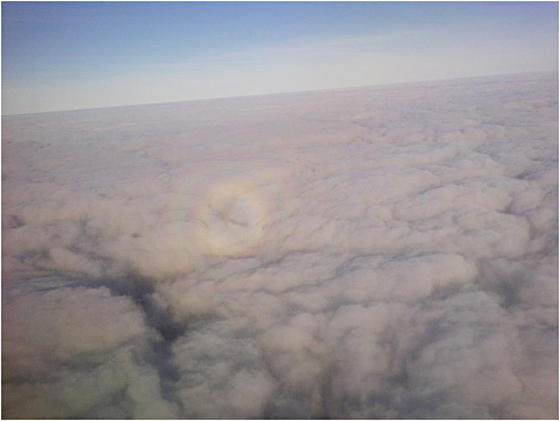A rainbow ring in the clouds over Art Basel Miami Beach
News reports leading up to the 10th iteration of Art Basel Miami Beach were more concerned with where to find the parties rather than the art. But the insurance value of the art clocked in at $2.5 billion, so nothing to sneeze at. Peering out of the window of the plane I spotted a series of concentric rainbow rings, which I thought might portend something good to come.
Vito Acconci, Run-Off, 1970
Vito Acconci, Will, 1971
For the main fair, I organized the placement on consignment at two galleries of early works by Vito Acconci, and my hopes were high (in the end two of three sold for $75,000). That is a painless way to participate, as it avoids cost (which can easily exceed $100,000 for booth fees, shipping and hotels), aggravation and the capricious politics of actually trying to get into the fair. And it frees up more time to look at art, and. . . party!
The separate Design Miami fair opened first, and things of interest included a crated box of small granite slabs by Max Lamb that when stacked form a stool or end table, and a rather juvenile (probably why I liked it) table by Konstantin Grcic with décor that resembles drag-racing decals.
Konstantin Grcic table
Meanwhile, though there’s no sign of Occupy Art Basel, I did receive a comical email from the noted collector (and occasional art flipper) Adam Lindemann. “Dear friends, I hope you have a moment to consider a new movement I am forming to BOYCOTT the Miami Art Fair. If you are going to Miami, you may rethink your decision, if you are already there, you can still boycott. This is not a joke, it’s high time we join together and say: Hell NO! to one more sweaty schmoozer and boozer. . . . This time, I won’t be seeing you there, Adam.” Translation — his wife’s gallery, Luxembourg & Dayan, probably did not get admitted to the fair this year.
En route to the evening’s activities, the taxi driver drove five-plus minutes with the seat belt chime ringing like water torture. Though he was nonplussed I had to ask him to buckle up, and it wasn’t safety I was concerned with but sanity.
The Art Basel Miami Beach party hierarchy is unlike anything I’ve ever seen — each VIP “closed list” event has a further VVIP party within its belly. It’s like a secret Masonic order, according to your riches and status. Fun. Seventeen ancillary fairs set up in addition to the main fair, so I thought I would give one a shot before the onset. I find good art uplifting, but I left Scope Miami on the floor, I thought it was so painfully bad.
Logo for Scope art fair not Scope mouthwash
Crashed a dinner and after-party, as I’m still waiting for my invitations to arrive, which almost certainly got lost in the (e)mail. By 2 am I’ve had my ears boxed by Britain’s most famous female “bad girl” artist, Tracey Emin, for being too negative (moi?) and listened with empathy to the director of a top London gallery complain that the gallery owner strode into the booth during installation and shook his hand, utterly failing to recognize him. Welcome to Art Basel.
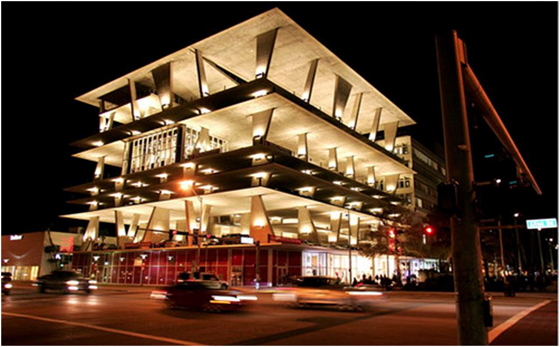
Herzog de Meuron Ferrari party with VIP party in the belly on the penthouse
In the morning I had an anemic run, thinking that I was barely keeping pace with Jeffrey Deitch, noted former dealer and now director of the Museum of Contemporary Art Los Angeles, when for about the 10th year in a row he came from nowhere and passed me on the beach. Even taking a jog is a social event, eavesdropping on fast-walkers collecting proclivities and greeting acquaintances while, in my case, gasping for breath.
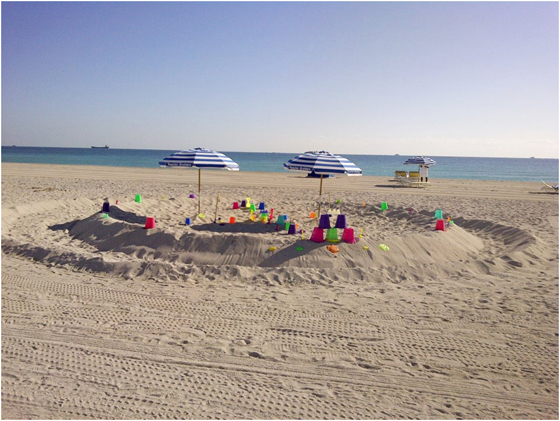
Beach scene where Jeffrey Deitch outpaced our correspondent
Finally it was time for the big tent to open. After as little as six hours on feet at fair I am numb with pain and my posture begins to resemble a potato bug in process of rolling up. One of the big trends I spotted: smaller and smaller text on wall labels indentifying the art — my bad back is equaled only by my failing eyesight.
Some of overheard, hyperbolized art-speak bandied about in the booths: “Did you hear the curatorial buzz surrounding her?” “What depth to the work!” (describing four empty plastic gas canisters with a screw running through them), and the most recurring, “That is sooo important.” Curing cancer is important, not another rehashed conceptual trinket.
P. Diddy was making the rounds with his art face on and phalanx of bodyguards fending off zealous collectors and their phone cameras. He took home a neon light work by Emin for £60k. But what made the biggest impression, despite the ludicrous protestations to the contrary by Adam Lindemann in the New York Observer, was the abundance of absolutely phenomenal, glorious, spectacular art.
Paintings by the lyrical abstractionist Larry Poons, who for his “throw paintings” series did just that with goops of paint; sculptures by Ai Weiwei ranging in price from €30k to €300k; buckets of Gerhard Richter (after his stellar auction performance of late); more Andy Warhols than you could shake a stick at; and, one of my favorites (a great buy ahead of his Museum of Modern Art retrospective in 2014), Sigmar Polke.
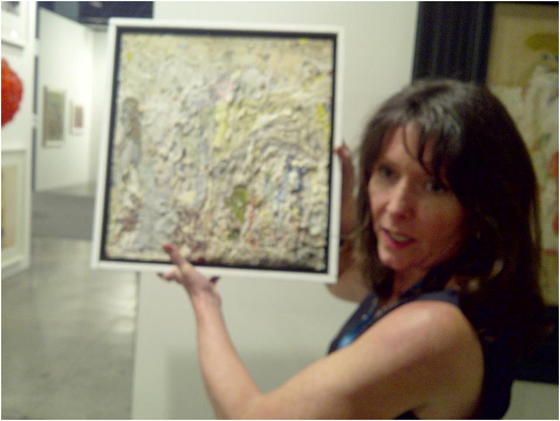
Loretta Howard showing a Larry Poons drawing at ABMB 2011
I could easily drop millions and not lose sleep due to the exceptionally high quality of the works on offer. Though I’d probably end up in debtor’s prison as a result.
The ancillary NADA fair was wonderful, a venue where you can still impulse buy art for (sometimes) well under $1,000. Amazing drawings at White Columns, curated by Matthew Higgs, including drawings by Ella Kruglyankaya; at Exhibition A, editions by Nate Lowman for $250; and at Company Gallery a book with a crayon drawing by California artist Jay Stuckey, also $250. Still, with each visit back to the main fair, I realized I could spend six months, every day, going through the aisles making discovery after discovery of splendorous works.
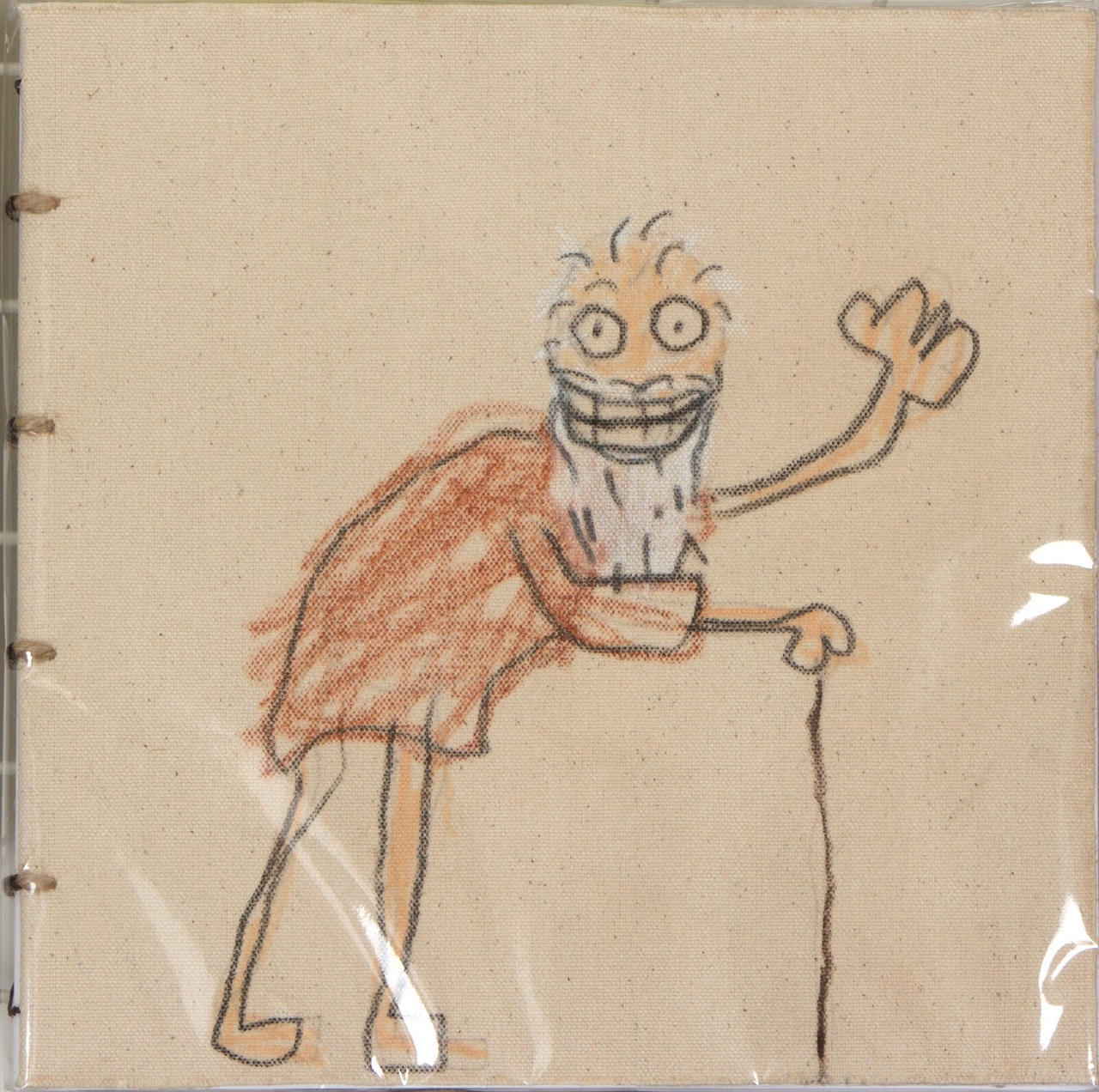
Jay Stuckey drawing from Company Gallery, Los Angeles, at NADA 2011
Crashed yet another dinner, another party. Me and my liver were about to pack it in after a mere couple of days. Then at 6:30 am the phones rang, and rang, many of them, like a symphony in my hotel room. When I finally picked up fearing who knows what, I realized I had placed a bid for a drawing in a Cologne auction and neglected to diary in the time of the sale. They were about to hammer the piece when I (barely) came to. I think I bought a drawing but still awaiting confirmation from the auction house.
Art fairs are like casinos, with no outside light, and no sense of time or place. Though organized in a simple grid, it’s still a labyrinth I always manage to get lost in and miss things. You still regularly encounter the “waiting list,” and the strategies of getting ahead in the queue; in other words, the mention of serving on the board of a museum brings about more jumping than in game of checkers. Going from booth to booth is the equivalent of speed dating, falling in love with art indiscriminately, without taking stock of the consequences. Then came a night, for a change, when I was actually invited to a dinner and party.
The question arose, and arose, would I make it home alive? One night, I went to a dinner for a TV show about the Novogratz family (Robert and Cortney and their seven children, now on HGTV, possibly). Seated next to me was an American software exec — Microsoft handily paid for the evening — who asked, “Are you British?” I have a Long Island accent that my wife and kids never let me forget about.
At yet another party, this one the art world equivalent of Girls Gone Wild, ABMB founding director Sam Keller pulled me off the floor to dance on a table. Along with the obvious cast of art insiders, revelers included Paris Hilton, Owen Wilson, and Sean Penn. Sean Penn? What crisis could he possibly be attending to at Art Basel? By the end of the night on the walk back to the hotel, I was propositioned by a woman in a Hummer which all made me realize just how badly I was ready to go home.
Spoke to my kids who expressed their feelings of separation thus: “Don’t forget to bring souvenirs.” By day five I found it harder and harder to do. . . anything. Is there a threshold, a moment at which point art equals disillusionment? Nah. What have I learned about myself from my Miami experience is that I am bi – every time I enter another booth I want to buy something. By the end of it all, I began to resemble the Jay Stuckey drawing of an old man with a walking stick. And with a lot less cash to boot.

